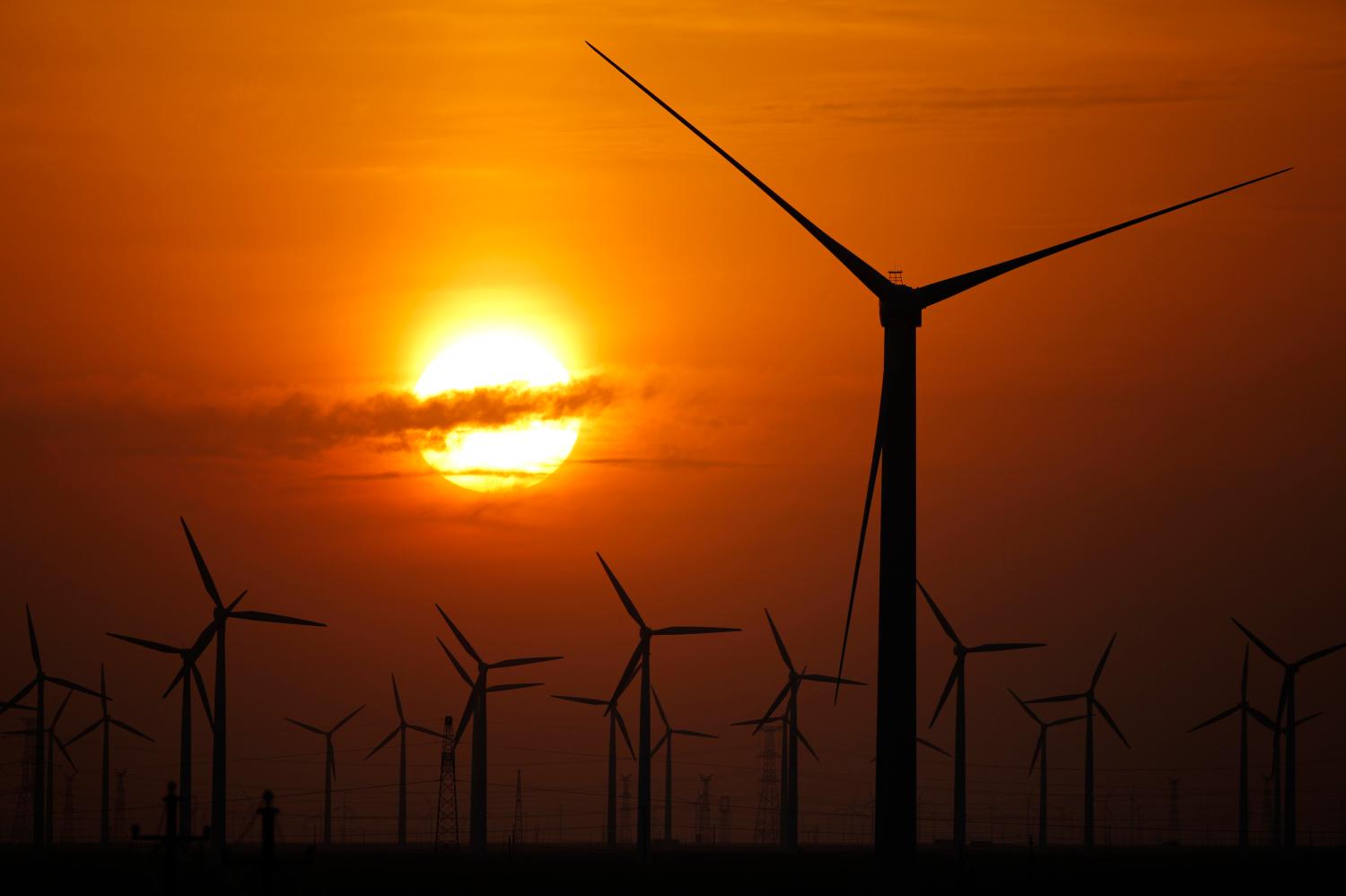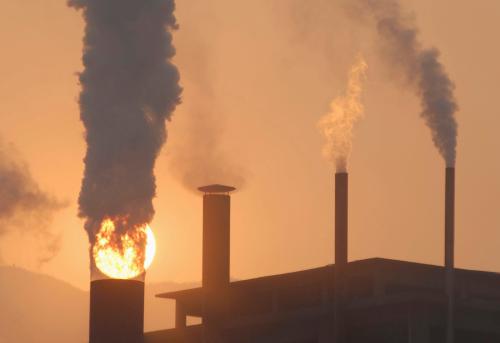An updated version of this paper was published in a special issue of The Energy Journal.
Current U.S. law offers a variety of tax credits for different kinds of energy efficient household capital. This study uses an intertemporal general equilibrium model to compare the environmental and economic performance of two policies: (1) a tax credit of 10 percent of the price of household capital that is 20 percent more energy efficient than its unsubsidized counterpart, assuming half of new household investment qualifies for the credit; and (2) a tax starting at $30 ($2007) per metric ton of carbon dioxide (CO2) and rising 5 percent (inflation adjusted) each year. By 2040, the carbon tax reduces emissions by 60 percent while the investment tax credit for energy-efficient capital reduces emissions by about 1.5 percent. Under the assumption that other countries do not adopt a price on carbon, we find that although the carbon tax reduces U.S. GDP, it improves the welfare of U.S. households because it reduces the world price of fuels, strengthens U.S. terms of trade, and makes imported goods cheaper. The revenue neutral tax credit reduces welfare but boosts U.S. GDP growth slightly in the first few years. Both policies have similar impacts on the federal budget, but of opposite signs.
1. Introduction
Proponents of ambitious climate policy often support imposing both a price on carbon and “complementary policies” to provide incentives for the deployment of energy-efficient and low carbon technologies. Current U.S. law offers an extensive variety of tax benefits for certain kinds of energy production and conservation, including incentives for renewable electricity production, energy efficient household investments, and bio-fuel production. The U.S. Congress expressed its continued enthusiasm for these measures in the American Recovery and Reinvestment Act of 2009 (Recovery Act), which extended many consumer energy-related tax incentives as part of the fiscal stimulus package.
In particular, the Recovery Act expanded two energy-related tax credits for households: the non-business energy property credit and the residential energy efficient property credit. The non-business energy property credit equals 30 percent of homeowner expenditure on eligible investments, up to a maximum tax credit of $1,500 over 2009 and 2010. The capital and labor costs of certain high-efficiency heating and air conditioning systems, water heaters and stoves that burn biomass qualify, as does the capital (but not labor) cost of certain energy-efficient windows, doors, insulation and roofs. The residential energy efficient property credit equals 30 percent of the installed costs of solar electric systems, solar hot water heaters, geothermal heat pumps, wind turbines, and fuel cell systems.
Another potential expansion of subsidies for energy efficiency appears in HOME STAR, a bill designed to strengthen short-term incentives for energy efficiency improvements in residential buildings. This proposal would establish a $6 billion rebate program for energy efficient appliances, building mechanical systems and insulation, and whole-home energy efficiency retrofits. The program targets energy efficiency measures that would achieve an energy efficiency gain of 20 percent.
One key goal of subsidies for energy efficiency investments is to reduce electricity generation and thereby reduce carbon dioxide emissions and other air pollutants. Some analyses suggest that increasing energy efficiency is a relatively low, possibly negative, cost way to abate greenhouse gas emissions and other air pollutants as well. However, adoption rates for energy efficient technologies fall short of levels that many believe are justified by the potential return on such investments. For example, the rates of return households apparently require for investments in energy efficiency are considerably higher than the rates of return used by electric utilities when investing in new generation. That difference in rates of return has spurred the development of utility-based demand side management (DSM) programs which often include subsidies for household energy efficiency. A growing economic literature explores this “energy-efficiency gap.”
Regardless of the net benefits from investments in energy efficient capital, recent expansions in policies to promote those investments raises the question of how much they reduce carbon emissions and how they compare to policies that target carbon more directly. This paper uses an intertemporal general equilibrium model called G-Cubed to compare and contrast the environmental and economic performance in the United States of a tax credit for energy efficient household capital and an economy-wide price signal on carbon from fossil fuels used in the energy sector. We choose the tax credit and carbon tax rates of those policies so that they have roughly comparable fiscal impact on the US government; that is, if the policies were implemented together, the revenue from the carbon tax would offset most of the reduction in revenue associated with the tax credit. When examining the policies individually, we use a lump sum tax or rebate in order to hold federal spending and the budget deficit constant. A tax credit for energy-efficient household capital reduces its relative price to homeowners and induces them to invest more. As household capital turns over, the energy saving properties of the policy accrue along with the aggregate tax expenditure up to the point where households have adopted all the energy efficient capital that is cost-effective at the subsidized rate. Unless market conditions evolve to the contrary, the government must sustain the subsidy to prevent households from reverting to purchasing relatively lower efficiency capital. As a result, it will have permanent effects throughout the economy. By raising the rate of return on household capital relative to capital in other sectors, the subsidy permanently shifts the economy’s overall portfolio of physical capital.
The empirical evidence on the effects of investment tax credits is limited and pertains primarily to the effect of tax credits on investment levels and energy savings. Gillingham et al. (2006) summarize the literature on tax credits to promote energy efficiency. Hassett and Metcalf (1995) show that a 10 percentage point change in the tax price for energy investment would lead to a 24 percent increase in the probability of energy conservation investment. The degree to which households and firms anticipate policies can significantly affect the results, particularly in the early years of the policy. For example, if households anticipate a subsidy to capital then they will delay acquiring capital they would otherwise purchase in order to take advantage of the subsidy later. Similarly, Hassett and Metcalf (1995) and others point out that tax credits are unlikely to be efficient tools for reducing carbon emissions. Consumers who would have purchased energy efficient capital in the absence of the subsidy receive a windfall, and unless the subsidy is perceived to be permanent, the effect could be to induce an intertemporal substitution in investments more than a net increase. This intertemporal substitution can be an important real-world policy effect, and it is captured in the G-Cubed model via forward-looking behavior on the part of households and other investors.
The Brookings Institution is committed to quality, independence, and impact.
We are supported by a diverse array of funders. In line with our values and policies, each Brookings publication represents the sole views of its author(s).









